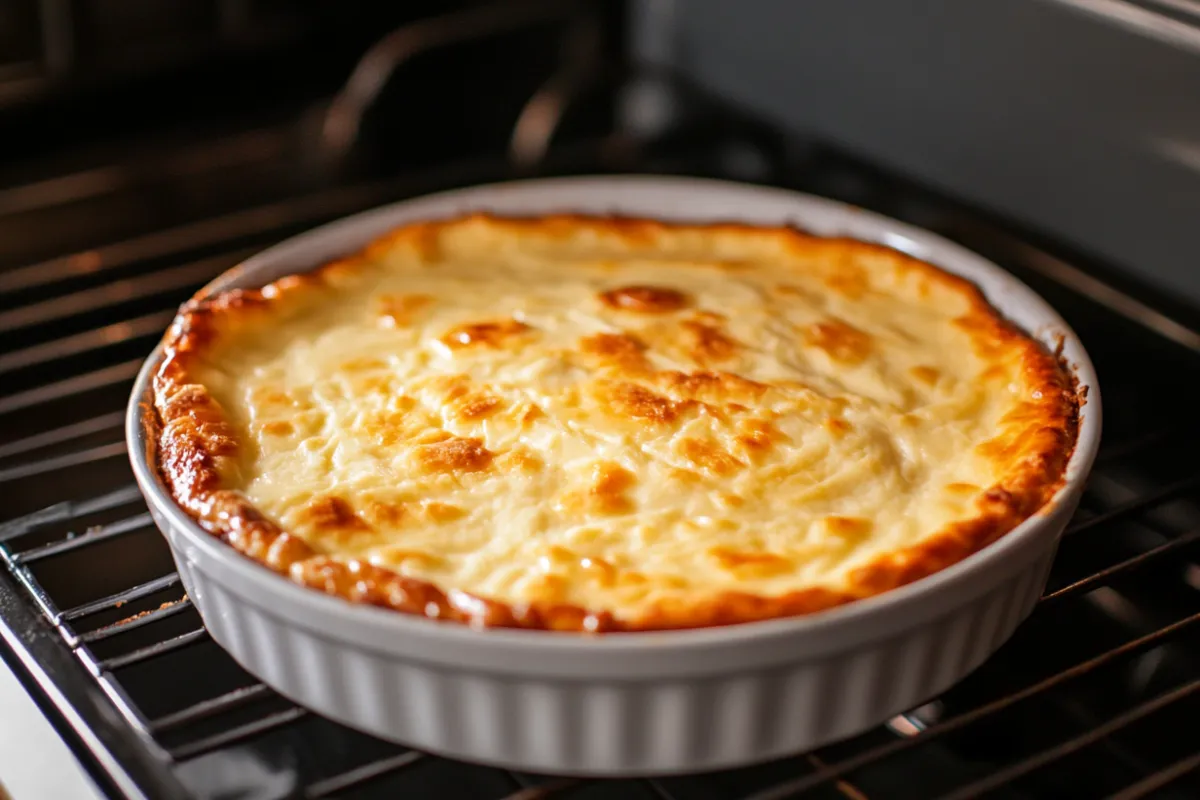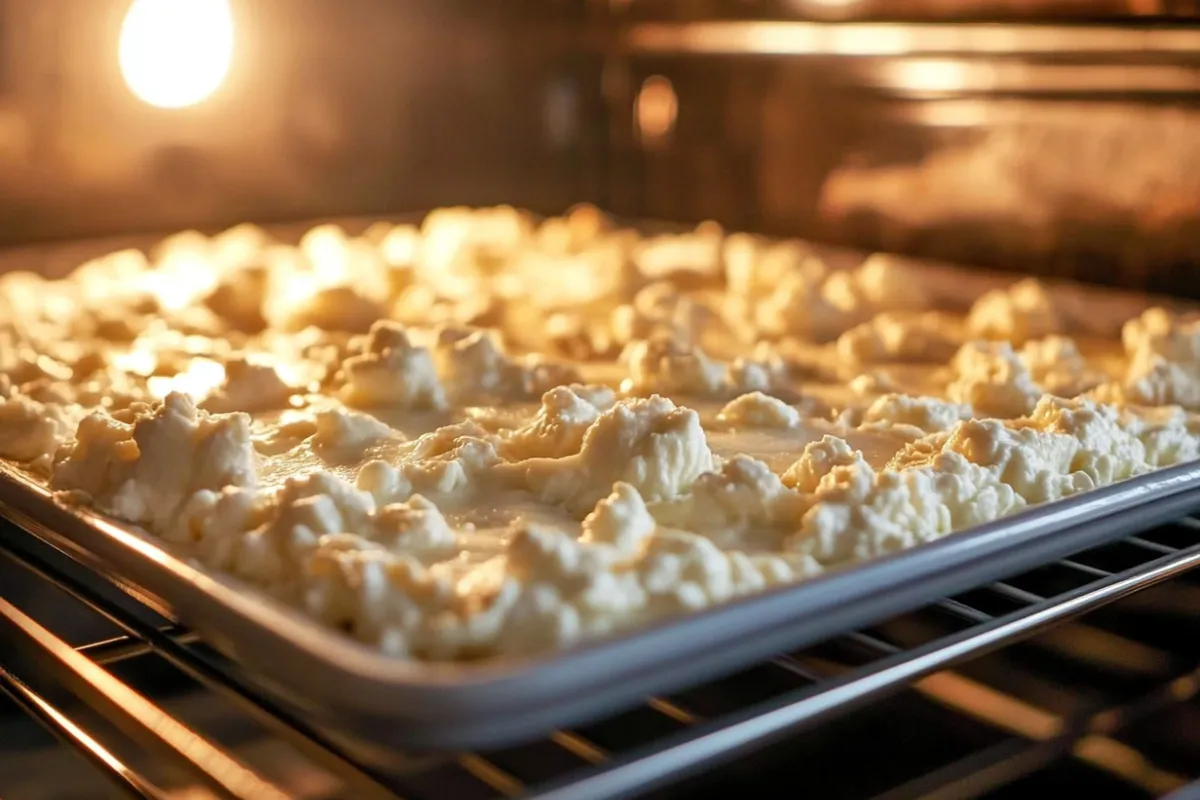Cheese is a favorite ingredient in many baked dishes, from pizzas to casseroles. If you’ve ever wondered, will cheese melt in the oven, or why some cheeses behave differently under heat, this guide will provide you with the answers. Whether you’re aiming for a gooey, stringy layer or a crispy top, knowing how cheese melts in the oven is key to achieving the perfect result.

Key Takeaways
- The melting point of cheese is determined by its composition, including the ratio of fat, moisture, and protein content.
- Oven temperature and cooking time play a crucial role in determining whether cheese will melt properly and achieve the desired texture.
- Different types of cheese have varying melting capabilities, with some being better suited for baking and others more prone to becoming stringy or greasy.
- Proper preparation, such as shredding or slicing the cheese, can help ensure even melting in the oven.
- Understanding baking techniques and common mistakes to avoid can help you consistently create perfectly melted cheese dishes.
Understanding the Science of Cheese Melting
Cheese is a favorite in the kitchen. The science of cheese melting is interesting. It looks at the cheese composition and its melting point. Knowing these helps get the cheese just right.
Composition and Melting Point
The cheese composition is key. It has fat, protein, and moisture. Cheeses with more fat and moisture melt better. Those with more protein need hotter temperatures for a smooth texture.
Factors Affecting Meltability
Other things affect how cheese melts. The cheese’s age, additives, and how it’s made matter. Knowing these helps get the cheese just right in your dishes.
Learning about cheese melting science is rewarding. It shows how versatile cheese is. It’s a key part of making tasty dishes with melted cheese.
To better understand how different types of cheese melt, check out Why Won’t My Cottage Cheese Melt? for more on the science behind non-melting cheeses.
Types of Cheese and Their Melting Capabilities
Not all types of cheese melt the same way. The melting capabilities of cheese depend on its cheese characteristics and makeup. Knowing these differences helps you get the perfect melted cheese in your dishes.
Soft cheeses like mozzarella and brie melt really well. They have more moisture, which lets them melt smoothly. Hard cheeses, like cheddar and parmesan, dry out or get grainy when melted because they have less moisture.
Semi-soft cheeses, such as fontina and Gruyère, melt well but keep some texture. They’re great for dishes that need a creamy, cohesive melted cheese.
Will Cheese Melt in the Oven?
Oven Temperature and Cooking Time
When melting cheese in the oven, oven temperature and cooking time matter a lot. These factors affect how cheese melts. Knowing how they work together is key to getting the cheese just right.
Most cheeses start to melt between 150°F and 180°F (65°C and 82°C). But, the exact oven temperature needed can change based on the cheese type. Softer cheeses like cheddar or mozzarella melt faster than harder ones like parmesan or aged cheddar.
The cooking time also plays a big part. Longer times help cheese melt smoothly and creamily. But, shorter times might leave the cheese only partially melted or stringy.
By adjusting oven temperature and cooking time carefully, anyone can get great at melting cheese in the oven. This opens up a world of tasty baking techniques and food preparation options.
To prevent the cheese from drying out or becoming crispy, consider covering your dish with aluminum foil during the melting process. For a detailed guide on preventing overcooking or burning, check out How to Caramelize Cheese.
Preparing Cheese for Melting in the Oven
Preparing cheese for melting in the oven is crucial. It affects the final taste and texture of your dish. The cheese preparation process is essential for achieving the perfect melt.
Shredding or Slicing Cheese
is a great way to prepare it for melting. Shredding or slicing cheese into thin pieces helps it melt evenly and quickly. This is because the cheese’s surface area increases, allowing it to melt faster.
For shredding, use a sharp grater or food processor for a fine texture. A sharp knife or cheese slicer is best for slicing. These tools help you get thin, even slices that melt well.
The type of cheese preparation also affects the melt. Shredded cheese can make the melt stringier or chunkier. Sliced cheese, on the other hand, results in a smoother melt.

Techniques for Melting Cheese in the Oven
To get the perfect melted cheese in the oven, you need a little skill. Broiling is a great way to melt cheese fast. It uses the oven’s broiler to make the cheese melt and brown quickly. This gives you a crispy top.
Baking at a lower heat is another method. It melts the cheese slowly and evenly. This makes the cheese smooth and creamy.
The secret to great cheese melting is in the oven settings and how you prepare the cheese. Try different oven temperatures and cooking times to find what works best for your dish. Also, shredding or slicing the cheese can help it melt faster and more evenly.
For even better results, mix broiling and baking. Broil the cheese first to get a golden-brown top. Then, bake it at a lower temperature to melt it through. This method makes your cheese dish look and taste amazing.
Cheese Texture and Consistency After Melting
Melting cheese in the oven can change its texture and consistency a lot. Knowing the culinary science behind melting cheese is crucial. It helps achieve the right cheese texture and cheese consistency. You can get a smooth melted cheese or a stringy melted cheese, depending on several factors.
Smooth or Stringy Melted Cheese
The cheese texture and cheese consistency of melted cheese depend on its composition and how it reacts to heat. Cheeses with more fat and less moisture melt smoothly and creamily. Cheeses with more moisture and less fat melt into a stringy melted cheese because the proteins form long strands.
The way you prepare the cheese also matters. Shredding or slicing it right can affect the final cheese texture and cheese consistency. Proper preparation ensures you get the smooth melted cheese or stringy melted cheese you want.
Baking with Melted Cheese
Learning to melt cheese in the oven opens up a world of flavors. You can make many cheese-based recipes that will impress your friends and family. From classic dishes like mac and cheese to new ideas, melted cheese can change your cooking.
Recipes and Dish Ideas
The grilled cheese sandwich is a favorite when you bake with melted cheese. It’s a simple yet satisfying meal that’s great for any time. Try adding tomatoes, bacon, or caramelized onions for a unique twist.
Baked mac and cheese is another great option. It combines creamy cheese sauce with macaroni noodles for a rich dish. You can experiment with different cheeses or add toppings like breadcrumbs or bacon for extra flavor.
Want to impress at your next party? Try a melted cheese-filled appetizer like baked brie or stuffed mushrooms. The melted cheese with other ingredients creates a memorable experience.
Tips for Achieving Perfect Melted Cheese
Getting the perfect melt for your cheese can take your dish to the next level. From tips for melting cheese to essential cheese melting techniques, mastering cheese preparation is crucial. Here are some expert culinary expertise tips to help you achieve that dreamy, gooey cheese every time.
Begin by picking the right cheese for your recipe. Hard, high-moisture cheeses like cheddar, Gruyère, and Fontina melt well. On the other hand, softer cheeses like ricotta or cottage cheese might become grainy. Shredding or thinly slicing the cheese can also help it melt evenly.
When melting cheese in the oven, watch the temperature and cooking time closely. Use a moderate oven temperature, around 350°F. Keep an eye on the cheese to avoid burning or seizing up. Increase the cooking time slowly until you get the perfect melt.
Lastly, adding a small amount of liquid, like milk or cream, can help the cheese stay smooth and creamy as it melts. This trick is especially useful for leaner cheeses or when making a cheese sauce or dip.
Common Mistakes to Avoid When Melting Cheese
Melting cheese in the oven can be tricky. It’s easy to make mistakes that ruin the dish’s texture and consistency. Two big cheese melting mistakes are overheating and curdling.
Overheating and Curdling
High temperatures for too long can make cheese overheat and curdle. This leads to a grainy, unappetizing texture. The proteins in the cheese tighten and separate, causing fat and moisture to separate too.
To avoid cheese curdling, watch the temperature and cooking time closely. This is key when melting cheese in the oven.
Not slicing or shredding cheese properly is another mistake. Larger pieces take longer to melt evenly. This increases the risk of overheating and curdling.
By shredding or slicing cheese into smaller pieces, it melts faster and more evenly. This reduces the chance of culinary troubleshooting issues.

FAQ
Will cheese melt in the oven?
Yes, cheese can melt in the oven. But, it depends on the cheese type, oven temperature, and cooking time.
What factors affect the melting of cheese in the oven?
Cheese melting in the oven depends on its composition and moisture content. The fat and protein structure also matter. Oven temperature and cooking time are key.
What types of cheese melt best in the oven?
Softer cheeses like cheddar, Gruyère, and mozzarella melt well. Harder cheeses like Parmesan or Romano can get stringy or grainy.
How do oven temperature and cooking time affect cheese melting?
Oven temperature and cooking time are crucial. High temperatures and long times can make cheese tough. Low temperatures and short times might not melt it enough.
How should cheese be prepared for melting in the oven?
Shredding or slicing cheese helps it melt evenly. This increases its surface area, making it melt faster and more consistently.
What techniques can be used to melt cheese in the oven?
Broiling, baking, or a mix of both can melt cheese well. Adjusting oven temperature and cooking time is also important.
What are the different textures of melted cheese?
Melted cheese can be smooth and creamy or stringy and stretchy. This depends on the cheese type, moisture, and cooking method.
How can melted cheese be used in baking?
Melted cheese adds flavor and richness to baked dishes like casseroles, pizzas, and gratins.
What are some tips for achieving perfect melted cheese?
Use the right cheese, shred or slice it, and adjust oven settings. Avoid overheating or overcooking to get perfect melted cheese.
What are some common mistakes to avoid when melting cheese in the oven?
Avoid overheating cheese to prevent curdling or toughness. Also, don’t undercook it to avoid a grainy texture.
Conclusion
In this article, we’ve looked into the science of cheese melting in the oven. We’ve found out what makes it melt differently. This includes the type of cheese, oven temperature, and cooking time.
Knowing how cheese melts helps both home cooks and chefs make great dishes. They can use different techniques to get the cheese just right. Whether it’s shredding or slicing, this article helps you master the art of melting cheese in the oven.
We hope you try out the tips and ideas we’ve shared. Explore the world of cheese melting in the oven, culinary science, food preparation, and baking techniques. It will help you become a pro at working with dairy products. Most importantly, have fun and enjoy the tasty results!
For more inspiration and helpful tips, explore Delicious and Healthy Cottage Cheese Recipes to discover more ways to incorporate cheese into your cooking.

